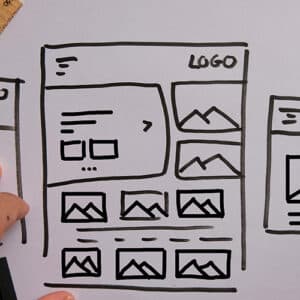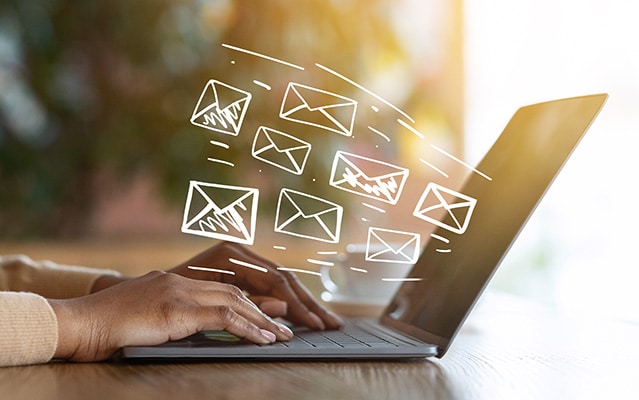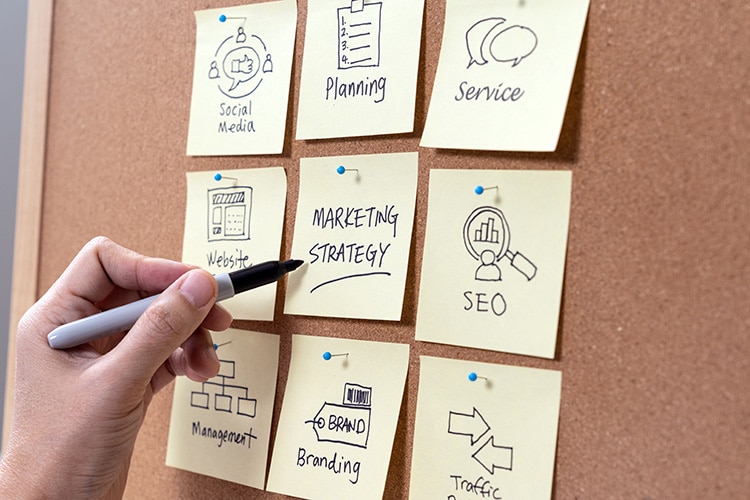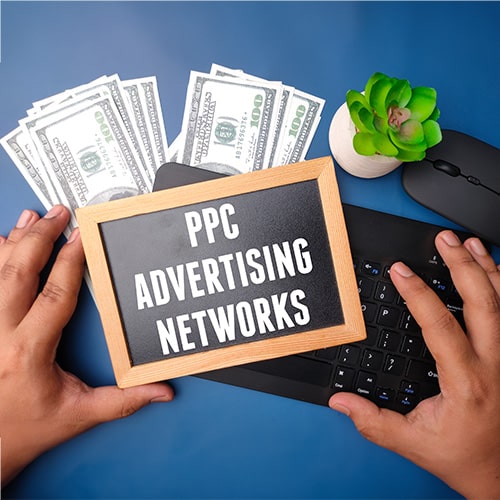Table of Contents
Hey, fellow auto shop owners! Suppose you’re looking for cost-effective ways to boost customer retention and generate more repairs and revenue.
In that case, an email marketing strategy should be at the top of your priority list.
While fixing cars will always be the core of our business, marketing those services effectively is crucial to long-term success.
Studies show repair shops that leverage email marketing outperform their competitors, seeing, on average, a 20% increase in appointments booked within a year.
That extra work translates directly to your bottom line.
In this blog post, I’ll explain the 8 essential steps to setting up an email marketing program tailored specifically for auto repair shops.
I’ll cover everything from collecting customer emails to designing high-converting campaigns that keep customers returning to your bay.
By the end, you’ll have a complete blueprint to attract more clients, remind them of your services, and turn one-time customers into lifelong patrons of your shop.
So let’s dive right into how email can turbocharge your auto repair business!
Step 1: Building Your Email Marketing List

Building an email list is a crucial step in establishing effective communication channels with your audience and growing your business.
In this step, we will explore three proven strategies for starting to build your email list:
- collecting email addresses from existing customers
- implementing website opt-in forms
- offering incentives for sign-ups
Collecting email addresses from existing customers
One of the most valuable sources of email addresses for your list is your existing customer base.
These customers have already shown an interest in your auto repair services, making them prime candidates for receiving future updates, promotions, and valuable content.
To collect email addresses from existing customers:
- Train your staff: Ensure that your team understands the importance of email marketing and how it benefits both the business and customers. Encourage them to ask customers for their email addresses during interactions or at the point of sale.
- In-store promotions: Place physical sign-up sheets or tablets near the checkout counter where customers can easily provide their email addresses. Highlight the benefits of joining your email list, such as exclusive offers, service reminders, or helpful maintenance tips.
- Follow-up emails: Send follow-up emails after completing a service or repair, thanking customers for choosing your auto repair shop. Include a polite request for their email address and emphasize the value they will receive by joining your list.
Implementing website opt-in forms
Your website is a powerful tool for capturing email addresses from interested visitors.
By strategically placing opt-in forms on your website, you can make it easy for people to subscribe to your email list and stay connected with your auto repair shop.
Consider these tips when implementing website opt-in forms:
- Placement: Position your opt-in form prominently on your website, such as on the homepage, in the sidebar, or as a pop-up. Experiment with different placements to see what works best for your audience.
- Clear and concise messaging: Clearly communicate the benefits subscribers will receive by joining your email list. For example, mention exclusive discounts, informative content, or early access to promotions.
- Simple opt-in process: Keep the opt-in form simple and easy to use. Ask for minimal information (usually just the email address and, optionally, the first name), reducing friction and increasing sign-up rates.
- Privacy assurance: Address any concerns about data privacy and reassure visitors that their information will be handled securely and not shared with third parties.
Offering incentives for sign-ups
Providing incentives is an effective way to entice visitors to join your email list.
By offering something of value in exchange for their email address, you can increase sign-up rates and build a more engaged audience.
Consider these incentives for sign-ups:
- Exclusive discounts: Offer a special discount or coupon code that is only accessible to email subscribers. This creates a sense of exclusivity and encourages visitors to join your list to take advantage of the offer.
- Free resource or guide: Create a valuable resource related to auto maintenance or car care tips, such as an e-book, checklist, or video tutorial. Offer this resource as a free download to anyone who subscribes to your email list.
- Contest or giveaway: Run a contest or giveaway where participants can enter by subscribing to your email list. Promote attractive prizes related to auto repair or services to incentivize sign-ups.
By implementing these strategies to collect email addresses from existing customers, implementing website opt-in forms, and offering incentives for sign-ups, you can start building a robust email list for your auto repair shop.
Remember to always provide valuable content and maintain regular communication with your subscribers to nurture the relationship and drive engagement.
*Note: It’s important to comply with applicable data protection and privacy laws, such as GDPR or CAN-SPAM Act, when collecting and using email addresses.
Step 2: Choosing an Email Marketing Platform for Your Auto Repair Shop

Selecting the right email marketing platform is essential for effectively managing and executing your email campaigns.
In this step, we will guide you through the process of choosing an email marketing platform for your auto repair shop.
We will cover the comparison of popular email marketing platforms, factors to consider when selecting a platform, and the steps involved in setting up your account and integrating it with your website.
Comparison of popular email marketing platforms
Before making a decision, it’s important to compare different email marketing platforms to find the one that aligns best with your auto repair shop’s needs.
Here are some popular platforms to consider:
- Mailchimp: Known for its user-friendly interface and robust features, Mailchimp offers a range of templates, automation options, and analytics to help you create and manage your email campaigns effectively. Go to Mailchimp’s website.
- Constant Contact: This platform provides various customizable templates, contact management tools, and list segmentation capabilities. It also offers additional features like event management and surveys. Go to Constant Contact’s website.
- GetResponse: GetResponse offers a comprehensive suite of email marketing tools, including autoresponders, landing page builders, and marketing automation. It also integrates with popular CRMs and e-commerce platforms. Go to Getresponse’s website.
- ConvertKit: Designed for creators and small businesses, ConvertKit offers simplicity and ease of use. It focuses on providing advanced automation features and segmenting capabilities to help you target specific groups of subscribers. Go to ConvertKit’s website.
- AWeber: AWeber is a reliable and user-friendly platform that offers a drag-and-drop editor, automation workflows, and split testing capabilities. It also provides a wide range of integrations with other business tools. Go to AWeber’s website.
Consider the features, pricing plans, scalability, customer support, and user reviews of these platforms to determine which one suits your auto repair shop’s unique requirements.
Factors to consider when selecting a platform
When selecting an email marketing platform, consider the following factors:
- Ease of use: Look for a platform with an intuitive interface that allows you to create and manage your email campaigns easily, even if you have limited technical knowledge.
- Template options: Assess the available templates and design flexibility to ensure they align with your brand image and enable you to create professional-looking emails.
- Automation capabilities: Determine if the platform offers automation features like autoresponders, drip campaigns, and triggered emails to streamline your communication and save time.
- List management: Consider how the platform handles contact management, list segmentation, and subscriber organization. Robust list management tools can help you target specific customer segments effectively.
- Integration possibilities: Check if the platform integrates with other tools you use, such as your customer relationship management (CRM) system, e-commerce platform, or appointment scheduling software.
- Scalability: Ensure that the platform can accommodate your growing email list and provides adequate pricing plans or packages for future expansion.
Setting up your account and integrating with your website
Once you’ve chosen an email marketing platform, follow these steps to set up your account and integrate it with your website:
- Sign up and create an account on your chosen platform’s website.
- Complete the necessary account setup steps, including providing your business details, creating sender profiles, and configuring your email settings.
- Explore the platform’s documentation, tutorials, or customer support resources to familiarize yourself with its features and functionalities.
- Integrate the email marketing platform with your website by installing plugins, adding code snippets, or enabling native integrations. This will allow you to collect email addresses through opt-in forms on your website and sync them with your email list.
- Customize your opt-in forms to match your website’s design and branding, and strategically place them on relevant pages to maximize conversions.
- Test the integration by submitting a test email address through your website’s opt-in form and ensuring that it appears in your email marketing platform’s subscriber list.
- Set up any necessary email automation workflows or welcome series to engage new subscribers and deliver value from the start.
By carefully comparing popular email marketing platforms, considering essential factors, and following the steps to set up your account and integrate with your website, you can choose the right platform for your auto repair shop and lay the foundation for successful email marketing campaigns.
Note: Always review and comply with the platform’s terms of service and privacy policies, as well as any applicable data protection regulations, when setting up and using an email marketing platform.
Step 3: Creating Relevant and Engaging Content to Boost Conversion Rate

In the world of email marketing, one of the key factors that determines the success of your campaigns is the content you deliver to your subscribers.
Creating relevant and engaging content should be at the forefront of your email marketing strategy.
In this step, we will explore why it is crucial to focus on creating content that resonates with your audience and keeps them interested in your auto repair shop.
We will delve into understanding your target audience, types of email content for auto repair shops, crafting compelling subject lines and email copy, and incorporating visuals and multimedia elements.
Understanding your target audience
To create content that truly connects with your subscribers, it is essential to have a deep understanding of your target audience.
Take the time to research and identify the preferences, needs, and pain points of your customers.
This knowledge will help you tailor your email content to address their specific interests and provide value.
By understanding your target audience, you can create content that speaks directly to them, whether it’s tips for maintaining their vehicles, addressing common car problems, or offering special discounts on services they frequently require.
This relevancy and personalization will increase engagement and foster a stronger connection between your auto repair shop and your subscribers.
Types of email content for auto repair shops
Auto repair shops have various opportunities to create diverse and engaging email content.
Here are some types of content you may consider incorporating into your email campaigns:
- Educational articles: Share informative articles about car maintenance, safety tips, or industry trends. Educating your subscribers demonstrates your expertise and positions your shop as a trusted resource.
- Customer success stories: Highlight satisfied customers and showcase their positive experiences with your auto repair services. These stories build trust and credibility while also encouraging loyalty among your existing customer base.
- Exclusive promotions and discounts: Offer special deals, discounts, or loyalty rewards to your email subscribers. This type of content provides an incentive for customers to choose your shop and encourages repeat business.
- Seasonal maintenance reminders: Send timely reminders to your subscribers about seasonal maintenance tasks such as winterizing their vehicles, preparing for road trips, or checking air conditioning before summer.
- How-to guides and DIY tips: Share step-by-step guides or videos that help your subscribers with common car-related tasks they can handle themselves. This content showcases your expertise while providing value to your audience.
Crafting compelling subject lines and email copy
To capture your subscribers’ attention and entice them to open your emails, crafting compelling subject lines is crucial.
Your subject line should be concise, intriguing, and relevant to the content inside.
Consider using action words, personalized language, or a sense of urgency to prompt opens.
In addition to subject lines, the body of your email copy should be engaging and easy to read.
Use conversational language, keep paragraphs short, and include a clear call-to-action.
Personalize the content whenever possible by addressing subscribers by name or segmenting your list based on their preferences.
Incorporating visuals and multimedia elements
Visuals and multimedia elements play a significant role in capturing and retaining your subscribers’ attention.
Including eye-catching images, videos, and infographics can make your email content more visually appealing and interactive.
Visuals can effectively showcase your services, before-and-after photos, or demonstration videos, helping to illustrate the benefits you offer.
Make sure your visuals are high-quality, relevant, and optimized for email viewing.
Also, consider creating mobile-friendly designs, as many subscribers access their emails on smartphones or tablets.
By incorporating visuals and multimedia elements strategically, you can enhance the engagement level of your email campaigns and leave a lasting impression on your subscribers.
By creating relevant and engaging content for your auto repair shop’s email campaigns is essential for building strong relationships with your audience, increasing customer loyalty, and driving business growth.
Step 4: Designing Eye-Catching Email Templates

When it comes to email marketing, the design of your email templates plays a crucial role in capturing your subscribers’ attention and driving engagement.
In this step, we will explore the importance of designing eye-catching email templates for your auto repair shop email campaigns.
We will discuss the significance of professional and branded templates, customizing templates to match your brand identity, and optimizing for mobile devices and different email clients.
Importance of professional and branded templates
Using professional and branded email templates is essential for creating a consistent and recognizable brand image.
A well-designed template presents your auto repair shop as a professional and trustworthy business, enhancing your credibility and leaving a lasting impression on your subscribers.
By incorporating your logo, colors, fonts, and other visual elements that align with your brand identity, you establish a cohesive look and feel across all your email communications.
This consistency helps build brand recognition and reinforces your customers’ connection with your auto repair shop.
Furthermore, professional templates often have well-organized layouts and clear sections that make it easy for recipients to navigate and understand your content.
This enhances readability and ensures that your messages are effectively delivered.
Customizing templates to match your brand identity
Customizing email templates to match your brand identity is crucial for creating a unique and memorable experience for your subscribers.
When your email templates reflect your brand’s personality and style, it strengthens the association between your auto repair shop and the content you deliver.
Consider the following customization options:
- Colors and fonts: Select colors and fonts that align with your brand’s visual identity. Ensure they are legible and create a harmonious overall look.
- Logo placement: Place your logo prominently within the template, typically at the top, to reinforce brand recognition.
- Imagery: Incorporate relevant images that reflect your auto repair services or showcase your satisfied customers. High-quality visuals can help captivate your audience and add visual interest to your emails.
- Branding elements: Use consistent branding elements such as headers, footers, and social media icons to reinforce your brand’s presence.
By customizing your email templates to match your brand identity, you create a cohesive and memorable experience for your subscribers, increasing the likelihood of engagement and customer loyalty.
Optimizing for mobile devices and different email clients
With the increasing use of mobile devices for email consumption, optimizing your email templates for mobile is crucial.
A responsive design ensures that your email campaign looks great and functions properly across various screen sizes and email clients.
Consider the following tips for mobile optimization:
- Responsive layout: Use a responsive design that adapts to different screen sizes, ensuring that your email is legible and visually appealing on both desktop and mobile devices.
- Clear, concise content: Craft concise subject lines, preheaders, and email copy that get straight to the point and are easy to read on smaller screens.
- Touch-friendly buttons: Make sure any buttons or call-to-action elements are large enough and spaced properly to accommodate touch inputs on mobile devices.
- Minimize load times: Optimize your images and limit the use of heavy graphics or animations to improve loading speed on mobile connections.
Testing your email templates across different email clients, such as Gmail, Outlook, and Apple Mail, is also crucial to ensure consistent rendering and functionality.
Email clients can interpret HTML and CSS differently, so thorough testing helps identify and address any display issues before sending your campaigns.
By optimizing your email templates for mobile devices and different email clients, you ensure that your auto repair shop’s messages are accessible and captivating, regardless of how recipients access their emails.
Step 5: Segmenting Your Email List

When it comes to email marketing for your auto repair shop, segmenting your email list is a powerful strategy that can significantly enhance the effectiveness of your campaigns.
In this step, we will discuss the importance of segmenting your email list and provide insights into the benefits of segmentation, identifying key segments for auto repair shops, and creating targeted campaigns based on customer preferences and behaviors.
Benefits of segmenting your subscriber list
Segmenting your email list involves dividing your subscribers into specific groups based on certain criteria, such as demographics, purchase history, or engagement level.
Here are some key benefits of segmenting your email list:
- Personalized content: By segmenting your list, you can tailor your email content to address the specific needs and interests of each group. This personalization increases relevance and engagement, as subscribers receive content that resonates with their unique preferences.
- Higher open and click-through rates: When your emails are targeted and relevant, subscribers are more likely to open them and take action. Segmenting allows you to send highly targeted campaigns, resulting in higher open rates and click-through rates.
- Improved customer retention: By understanding different segments of your audience, you can create campaigns that cater to their specific pain points and offer solutions tailored to their needs. This personalized approach can boost customer satisfaction, loyalty, and ultimately, customer retention.
- Increased conversion rates: Segmenting your list enables you to send targeted offers and promotions to specific segments, increasing the likelihood of conversions. By delivering the right message to the right audience, you can drive more sales and revenue for your auto repair shop.
Identifying key segments for auto repair shops
To effectively segment your email list, it is important to identify key segments that are relevant to your auto repair shop.
Here are some common segments to consider:
- New customers: Create a segment for new customers who have recently used your auto repair services. Send them welcome emails, educational content, and offers to nurture the relationship and encourage repeat business.
- Regular customers: Segment customers who frequently use your services or have shown loyalty to your shop. Provide them with exclusive discounts, rewards programs, and maintenance reminders to incentivize continued patronage.
- Vehicle type or make: If your auto repair shop specializes in servicing specific vehicle types or makes, segment your list accordingly. This allows you to send targeted content and promotions tailored to the specific needs of each vehicle type or make.
- Past purchases or services: Segment customers based on their previous purchases or services to offer related products or services. For example, if a customer recently had an oil change, you can send reminders for oil filter replacements or other recommended maintenance.
Creating targeted campaigns based on customer preferences and behaviors
Once you have identified key segments, you can create targeted campaigns based on customer preferences and behaviors.
Here are a few examples:
- Personalized recommendations: Use data from previous purchases or services to recommend relevant maintenance tasks or upgrades for each customer segment. For instance, if a customer recently had a brake repair, you can send them information about brake pad replacement intervals or discounts on brake fluid flushes.
- Seasonal promotions: Tailor your email campaigns based on seasonal factors, such as winterizing vehicles before colder months or summer road trip checklists. Segmented lists allow you to deliver timely and relevant content to each group.
- Customer feedback and reviews: Send personalized emails to ask for customer feedback or reviews after a service visit. This helps you gather valuable insights and testimonials that can be used to improve your services and build trust with potential customers.
By leveraging segmentation, you can create highly targeted campaigns that resonate with specific groups of subscribers.
Utilize data on customer preferences and behaviors to deliver personalized content, recommendations, and promotions that drive engagement and conversions.
Step 6: Automating Your Email Campaigns

Email automation has revolutionized the way businesses communicate with their customers and prospects.
For automotive repair shops, automating your email campaigns can significantly enhance your marketing efforts and drive better results.
In this step, we will discuss the importance of automating your email campaigns, including an introduction to email automation, setting up triggered emails for specific customer actions, and provide examples of automated email campaigns for auto repair shops.
Introduction to email automation
Email automation involves using technology to automatically send targeted emails to your subscribers based on specific triggers or actions.
This allows you to deliver relevant and timely content without requiring manual intervention for each individual email.
By automating your email campaigns, you can streamline your marketing processes, save time, and ensure consistent communication with your audience.
It enables you to deliver personalized messages to the right people at the right time, nurturing leads, retaining customers, and driving conversions.
Setting up triggered emails for specific customer actions
Triggered emails are automated messages that are sent when a subscriber takes a specific action or meets certain criteria.
Here are some examples of triggered emails that can be set up for your automotive repair shop:
- Welcome emails: When someone subscribes to your email list, a welcome email can be automatically sent to introduce your shop, highlight your services, and provide a warm greeting to new subscribers.
- Appointment reminders: Set up automated emails to remind customers of their upcoming appointments. This reduces no-shows and keeps your schedule organized.
- Service reminders: Send automated emails reminding customers when it’s time for routine maintenance or suggested service based on their vehicle’s mileage or previous visits. This helps to ensure that customers stay on top of their car maintenance and encourages repeat business.
- Post-service follow-ups: After a customer has visited your shop for a service, automate a follow-up email to thank them for their business and ask for feedback. This allows you to gather valuable insights and address any concerns promptly.
Examples of automated email campaigns for auto repair shops
Here are a few examples of automated email campaigns that can be implemented for your auto repair shop:
- Loyalty program emails: If you have a customer loyalty program, set up automated emails to notify customers about their rewards balance, upcoming expiration dates, and exclusive offers available only to loyalty members.
- Seasonal maintenance campaigns: Automate email campaigns to remind customers about seasonal maintenance tasks, such as winterizing their vehicles or preparing for summer road trips. Include tips and suggestions to help them keep their cars in optimal condition.
- Abandoned cart recovery: If you sell auto parts or accessories online, set up automated emails to follow up with customers who abandoned their carts. Remind them of the items they left behind and offer incentives or discounts to encourage them to complete their purchase.
- Re-engagement emails: Automate emails to re-engage with inactive subscribers who haven’t interacted with your emails for a while. Offer a special discount, share new services or promotions, and encourage them to reconnect with your shop.
Automating these campaigns allows you to stay engaged with your customers and prospects even when you’re busy serving other clients.
It helps you nurture relationships, improve customer retention, and increase revenue.
Step 7: Analyzing and Optimizing Campaign Performance

Analyzing and optimizing the performance of your email campaigns is crucial for the success of your auto repair shop’s marketing efforts.
By tracking key metrics, conducting A/B testing, and making data-driven improvements, you can enhance the effectiveness of your email campaigns and achieve better results.
In this step, we will discuss the importance of analyzing and optimizing campaign performance and delve into tracking key metrics, conducting A/B testing, and making data-driven improvements.
Tracking key metrics like open rates, click-through rates, and conversions
Tracking key metrics is essential for understanding how your email campaigns are performing and identifying areas for improvement.
Here are some key metrics to track:
- Open rates: This metric measures the percentage of recipients who open your emails. It gives insights into the effectiveness of your subject lines and overall email deliverability.
- Click-through rates (CTR): CTR measures the percentage of recipients clicking links within your emails. It indicates the engagement and interest levels of your subscribers. Tracking CTR helps identify the effectiveness of your call-to-action buttons, content, and offers.
- Conversions: Conversions refer to users’ desired actions after interacting with your email, such as making a purchase or scheduling a service appointment. Tracking conversions provides valuable insights into the effectiveness of your email campaigns in driving desired outcomes.
By tracking these metrics, you can gauge the success of your email campaigns and identify areas that may require optimization.
A/B testing subject lines, content, and design elements
A/B testing involves creating multiple versions of an email and testing different elements or landing pages to determine which performs better.
Here are some elements you can test:
- Subject lines: Test different subject lines to see which ones result in higher open rates. Play with different lengths, tones, and personalization techniques to find your audience’s most compelling subject line.
- Content: Experiment with various content formats, lengths, and styles to determine what resonates best with your subscribers. Test different layouts, CTAs, and copywriting techniques to optimize click-through rates.
- Design elements: Test different email design elements, such as color schemes, imagery, and layouts, to identify which designs drive higher engagement and conversions.
A/B testing allows you to make data-driven decisions and optimize your email campaigns based on actual performance metrics.
It helps you understand what works best for your audience and refine your approach accordingly.
Making data-driven improvements to enhance email campaign performance
Analyzing campaign performance data provides valuable insights that can guide improvements to your email campaigns.
Here are some data-driven improvements you can make:
- Personalization: Use data from past interactions or customer profiles to personalize your emails. Address recipients by name, tailor content to their interests, and recommend relevant services based on their previous interactions.
- Segmentation: Analyze data to identify specific segments within your email list and create targeted campaigns for each segment. Segmenting allows for more personalized and relevant communication, leading to higher engagement and conversions.
- Timing and frequency: Analyze engagement patterns to determine your email’s optimal timing and frequency. Experiment with different sending schedules and adjust based on the data to increase open and click-through rates.
- Mobile optimization: Review data on device usage to ensure your emails are optimized for mobile devices. With the majority of users accessing emails on mobile, it’s essential to have responsive designs and mobile-friendly content.
Regularly analyzing campaign performance and making data-driven improvements allows you to continually optimize your email marketing strategy and achieve better results for your auto repair shop.
Step 8: Following Email Marketing Best Practices

Email marketing can be a powerful tool for your auto repair shop, allowing you to reach and engage with your audience effectively.
To ensure the success of your email campaigns and maintain a positive reputation, it’s crucial to follow email marketing best practices.
In this step, we will discuss the importance of complying with email marketing regulations, incorporating personalization and relevance in email content, and optimizing send times and frequency.
Complying with email marketing regulations (GDPR, CAN-SPAM Act)
Compliance with email marketing regulations is essential to protect your business and maintain trust with your subscribers.
Two important regulations to consider are:
- GDPR (General Data Protection Regulation): If your auto repair shop operates in the European Union or sends emails to EU residents, you must comply with GDPR. This regulation requires obtaining proper consent, allowing easy opt-outs, and protecting personal data.
- CAN-SPAM Act: The CAN-SPAM Act applies to businesses in the United States and sets rules for commercial email messages. It requires providing accurate sender information, including clear unsubscribe options, and honoring opt-out requests promptly.
By complying with these regulations, you demonstrate respect for your subscribers’ privacy, build trust, and avoid potential legal consequences.
Personalization and relevance in email content
Personalization and relevance are key factors in successful email marketing campaigns.
Here’s why they are important:
- Engagement: Personalized emails that cater to the specific needs and interests of your subscribers are more likely to capture their attention and generate engagement. Incorporate personalization techniques like addressing recipients by name and segmenting your email list based on preferences and behaviors.
- Relevance: Sending relevant content to your subscribers ensures that your emails provide value and meet their expectations. Tailor your email content to address their pain points, offer helpful tips, share maintenance reminders, or highlight promotions on services they may be interested in.
- Customer loyalty: By consistently delivering personalized and relevant content, you can deepen your relationship with subscribers, enhance customer loyalty, and encourage repeat business.
Optimizing send times and frequency
Determining the best send times and frequency for your email campaigns can significantly impact their success.
Consider the following points:
- Testing and analyzing data: Experiment with different send times and frequencies to identify patterns of higher engagement. Analyze metrics like open rates, click-through rates, and conversions to determine when and how often your audience is most responsive.
- Consider your audience’s behavior: Understand your target audience and their habits. For example, sending emails during business hours may yield better results if you primarily serve working professionals.
- Optimal frequency: Finding the right balance between staying top-of-mind and avoiding email fatigue is crucial. Experiment with different frequencies, such as weekly, biweekly, or monthly, depending on your audience’s preferences and the nature of your business.
By optimizing your send times and frequency, you can increase the likelihood of your emails being opened, read, and acted upon.
Conclusion
In conclusion, implementing an email marketing strategy for your auto repair shop can be a great way to benefit your business.
Email marketing offers a wide range of advantages for auto repair shops, from building customer engagement and increasing brand awareness to driving more sales and revenue.
By following the 8-step guide we have provided and continuously testing and improving your campaigns, you can ensure that your emails are effective and engaging for your audience.
Don’t hesitate to contact TCM Digital if you need any assistance with your digital marketing initiatives.
Our experts are ready to help you take your email marketing game to the next level!
So what are you waiting for? Start crafting those emails and connecting with your customers today!
Remember, success in the digital world requires continuous learning and adapting, so don’t be afraid to try new things and find what works best for your specific shop.
With the right strategy and consistent effort, email marketing can truly drive growth for your auto repair business and needs to be a part of your digital marketing strategy.
So go ahead and give it a shot – success awaits!



